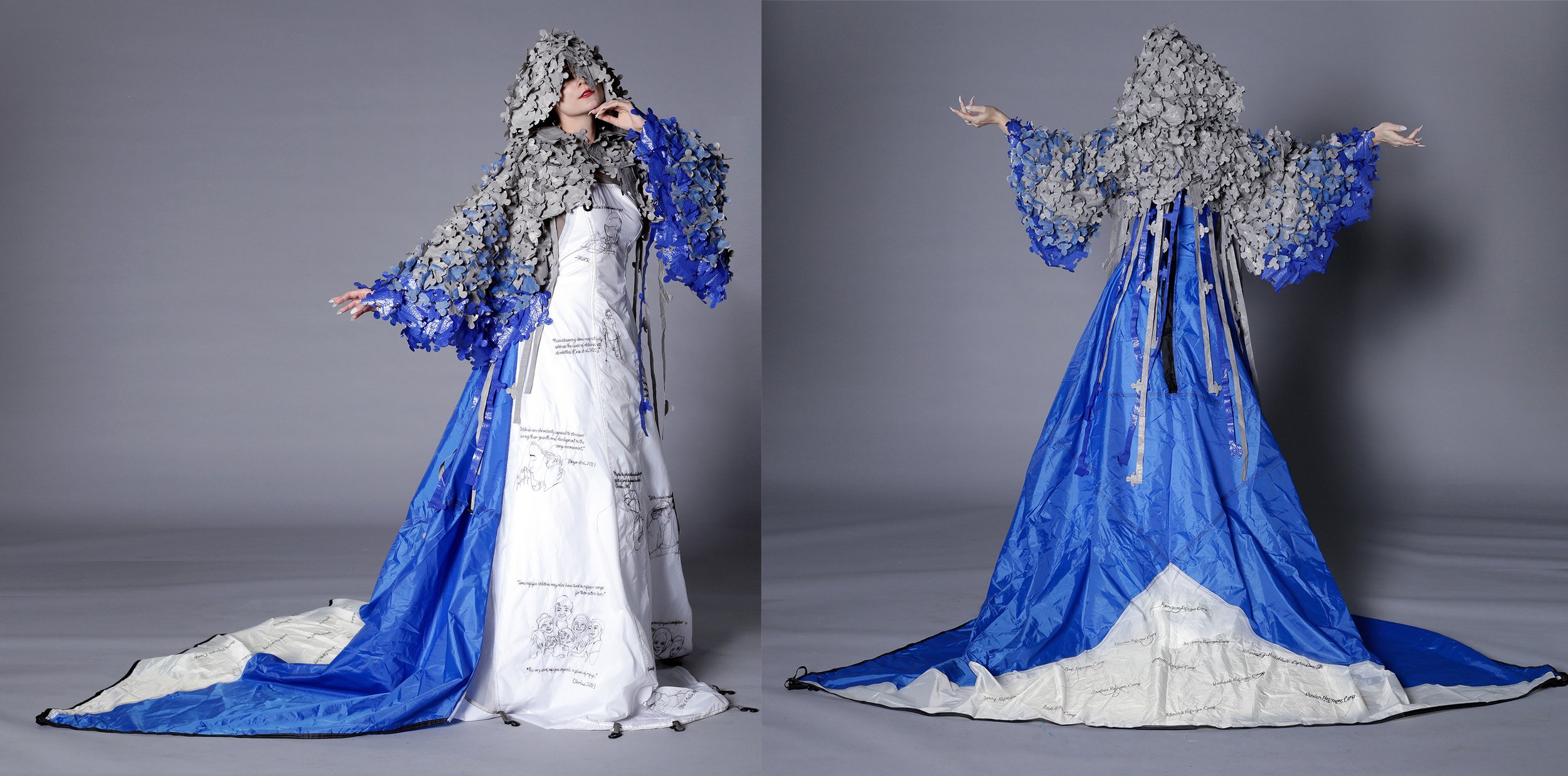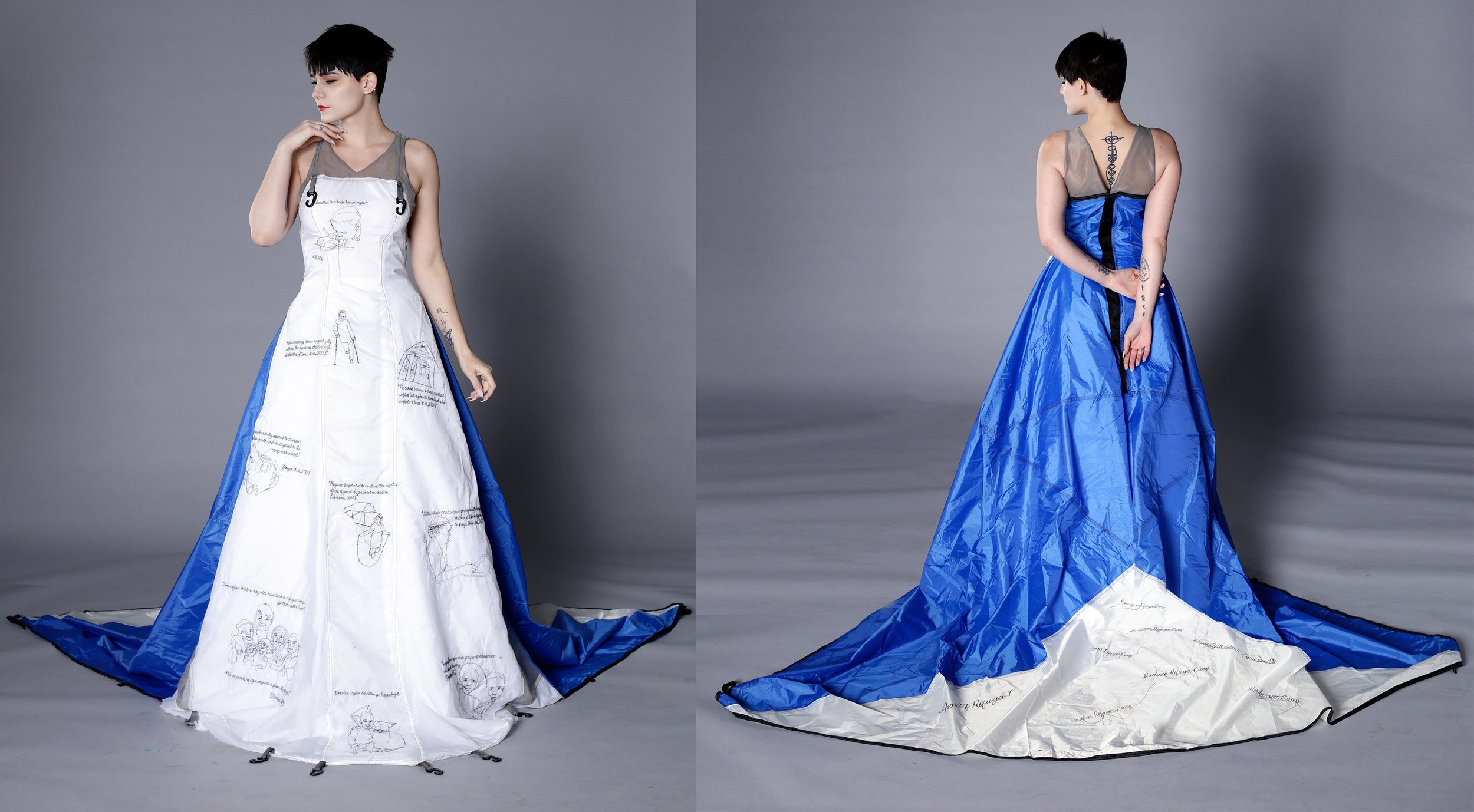International Upcycling Festival 2024
Stitched refugee stories: Using stitching and upcycling to convert children’s experiences into empowerment
Gross increases in the number of internally and externally displaced people have been and continues to be a global crisis. Forced migration causes many problems that need continual analysis. One of these challenges is how to best provide education for displaced and refugee children and children with asylum. This qualitative action research synthesized refugee evidence-based epistemologies with Arts-Based Research to creatively bring attention to and address the challenges that education faces in meeting the needs of displaced children or children with asylum. Reported refugee experiences, demographics, and research provided data that was analysed and then conveyed by the production of an upcycled garment. One unique feature of the garment is that much of the design was made from a discarded and unusable tent, much like the tents that many refugees find themselves living in. The visual design of the garment serves as a call to action and empowerment, drawing attention to the issues faced by refugee children in accessing education. Through advanced techniques used in garment design such as modular concepts and embroidery, a significant message is conveyed through artistic interpretation. This study joins the many other scholarly, academic, professional, and/or personal foci on the refugee experience and hopes to use fashion and upcycling to further the social justice work associated with a global solution for the refugee crisis.
Cite article:
Waiting for publication

